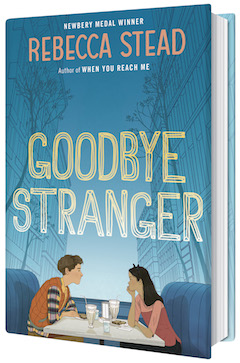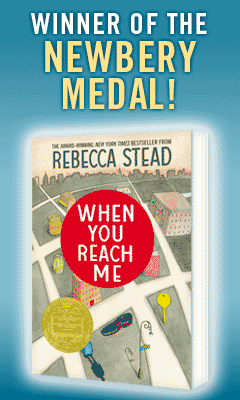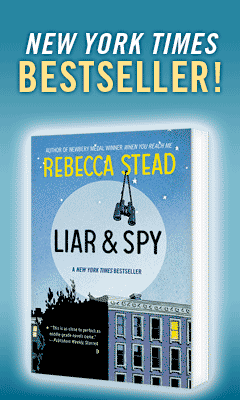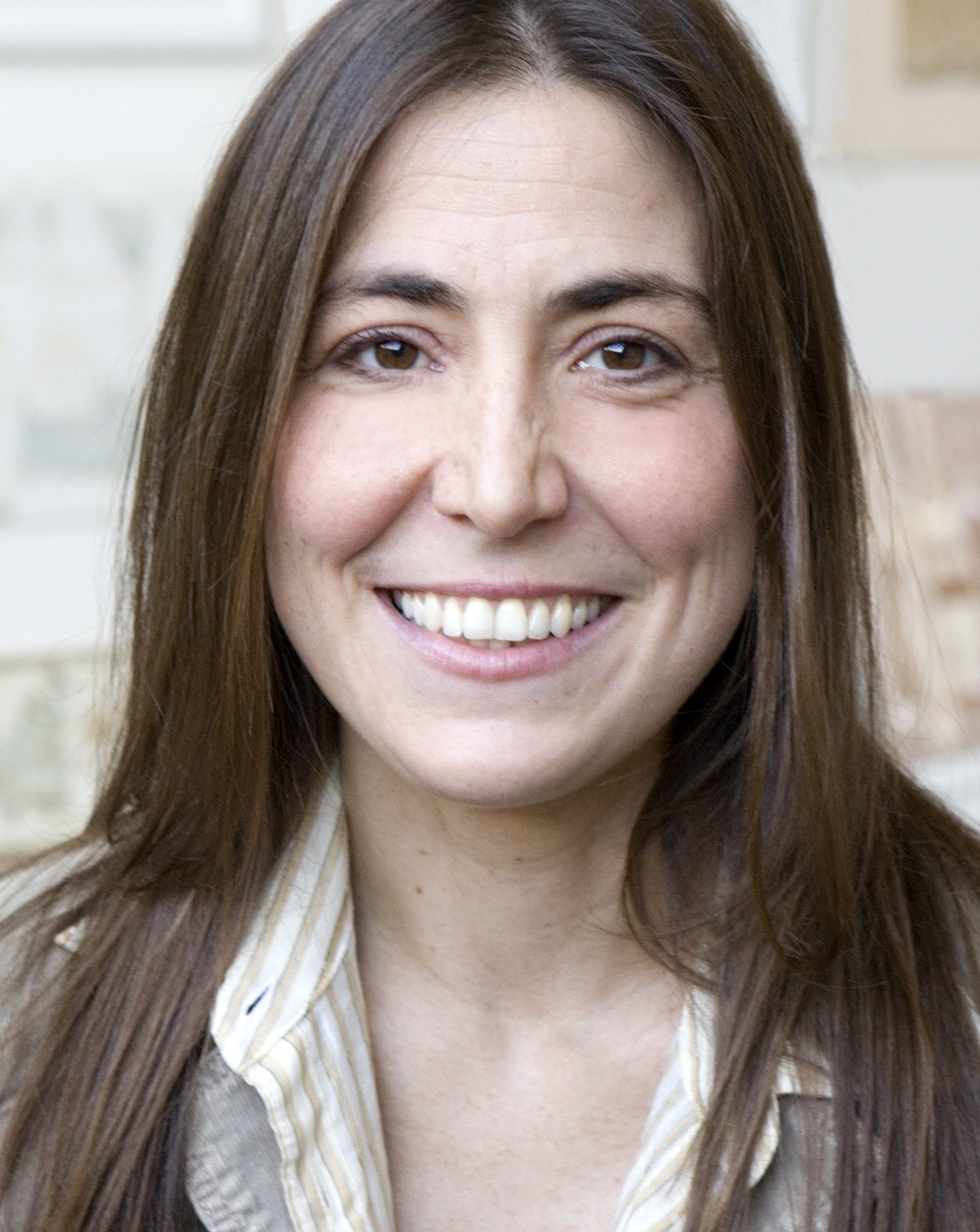Goodbye Stranger
by Rebecca Stead
Newbery Medal–winning author Rebecca Stead (When You Reach Me) has a rare gift. She can see into the souls of young people as they begin to grow conscious of how others view them from the outside and how they feel on the inside, and she has the skill to illuminate how they grapple with these gaps and overlaps in perception.
For Bridget ("Bridge") Barsamian, that quest to understanding begins early, at age eight, after she suffers an accident that results in 13 broken bones and a punctured lung. A nurse tells her, "You must have been put on this earth for a reason," and Bridge makes it her mission to discover what that reason is. Now, in seventh grade, one of Bridge's two best friends, Emily, develops "curvy new curves," as Tab's older sister puts it. Tab is the third member of their trio, and dates back the longest as Bridge's friend. Emily suddenly gains attention from boys, Patrick in particular. Emily is also athletic, and even eighth-graders start to say hello to her. Tab, bossy and a bit of a know-it-all, just wants things to stay the same.
Tab wants Bridge to join Human Rights Club with her, but Bridge signs up for Tech Crew. That's where Bridge meets Sherm. The trio's disparate interests could pull the friends apart. But Stead takes the more challenging route as a writer: she explores the work it takes to keep and nurture a friendship when the individuals involved are changing.
The situation grows further complicated when Emily and Patrick begin an innocent text exchange of photos of knees and elbows, and gradually more revealing images enter the mix. Tab becomes convinced that Patrick has let it go too far when a photo of Emily in her bra goes viral and, in a fit of loyalty, she takes matters into her own hands. Emily assures Tab that Patrick is telling the truth--that someone else got hold of his phone and sent the revealing photos to a larger group. Stead carefully keeps the situation contained; the subplot involving the texted photos never dominates the novel. Instead, she mines the situation to explore the nuances of friendship: loyalty and petty jealousy, independence and coercion, and where platonic love spills over into romance.
While Emily and Patrick are getting to know each other, Bridge and Sherm are cementing their friendship. Sherm becomes nearly as close a confidant to Bridge as Tab and Emily. And as friends tease Sherm about Bridge, he thinks, "She was definitely not his girlfriend. But she might be his best friend." So when the texted images go viral, Sherm takes a stand--adding to the author's profound exploration of the intricacies of human relationships.
Stead keeps a balance of levity and gravity through three alternating points of view. The main story arc unfolds through Bridge's third-person perspective; Sherm's story unfolds through a third-person narrative, and through unsent letters to his grandfather, who left his wife (and Sherm's family); and a third perspective comes via the second-person narrative of a mysterious high-schooler told in a single day, Valentine's Day.
The themes of the other two narratives resonate and reverberate with Bridge's thoughts. After Tab and Emily argue about the texted images, Bridge thinks, "Suddenly the air felt different. Tab wasn't here with them, on purpose. That had never happened before." Sherm tries to make sense of the departure of his grandfather, Nonno Gio, and remembers his father urging Nonno Gio to return to his native Italy for a visit, to remind him who he was, "Because you've turned into a stranger!" And Sherm recalls his grandfather's reply, "You said that, in a way, you were a stranger to yourself. It scared me." The high-schooler, trying to make sense of the rift she feels between herself and her best girlfriend, Vinny, realizes that although Vinny "made you feel as if you were exactly where you wanted to be, if not exactly who.... Maybe Vinny, your Vinny, was gone."
Stead raises questions about whether a relationship can survive change. If someone makes a mistake, can you forgive the person, if not the act? Can two people reconcile, if they are both willing to process what happened? Or is the change more systemic--has one of you become a stranger? The thing that scares Sherm about his grandfather's observation, that Nonno Gio is a stranger to himself, is that "Sometimes I felt like a stranger to myself too," especially when he holds Bridge's hand. "Is the new you the stranger?" Sherm wonders, "Or is the stranger the person you leave behind?"
It's a question all of the characters ask themselves at some point in Stead's perfectly synchronized novel. The book begins on the third Monday in September of Bridge's seventh-grade year and drives inexorably toward Valentine's Day--the complete day recounted in the high-schooler's narrative, and also Nonno Gio's birthday.
The novel threads together the separate journeys of the seventh-graders, the high-schoolers who orbit around Vinny, and even Nonno Gio. What do you do if you want to stay true to the person inside and the person perceived by outsiders? This is the central human dilemma. To Rebecca Stead's credit, she circles the question in such a way that readers of any age can examine it from a variety of perspectives. She looks at life in funny and profound ways that will allow young readers to come to these questions from multiple entry points, no matter where they are on their own journeys. --Jennifer M. Brown








